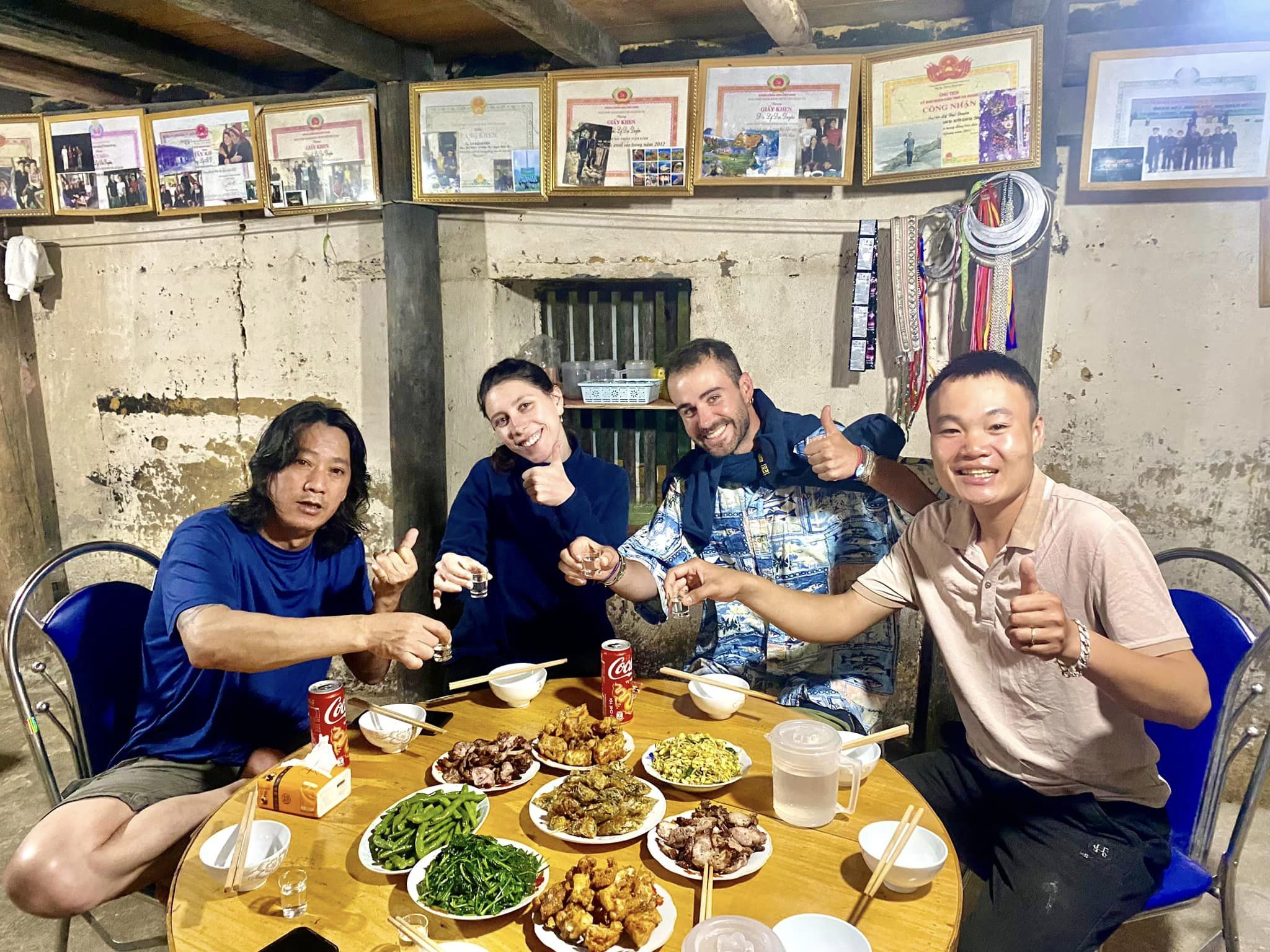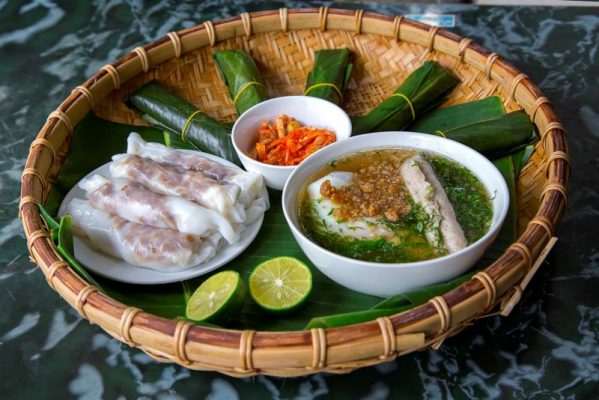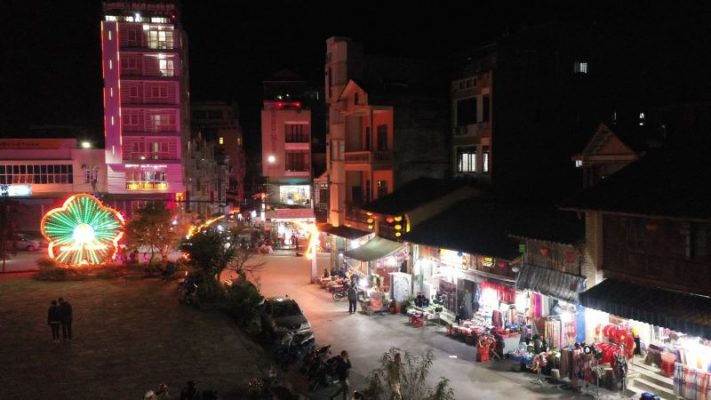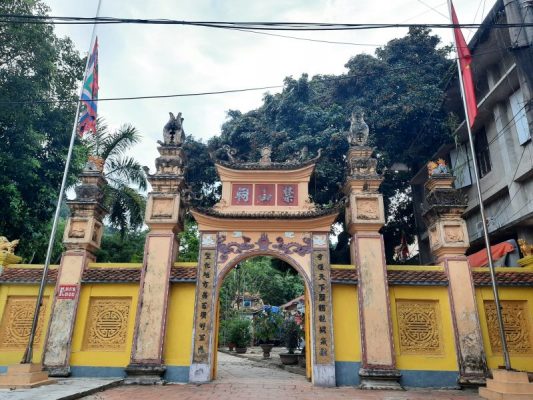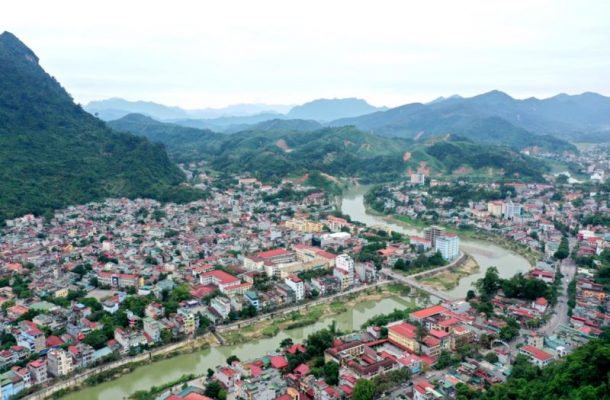Vietnamese food, with its delicate blend of flavors, colors, and intricate cooking techniques, has become a unique cultural icon, attracting travelers from all over the world. Journeying to Vietnam is not just about exploring majestic landscapes or ancient historical sites; it’s also about experiencing the distinctive flavors of this diverse and rich culinary heritage.
This article by Ha Giang Motorbike Tours will take you on a fascinating culinary journey, uncovering the 10+ most delicious dishes in Vietnam that you absolutely must try. Each dish carries its own unique flavor, encapsulating the essence of Vietnamese culture and age-old traditions. Get ready to tantalize your taste buds with colorful and enticing dishes, promising unforgettable culinary experiences!
Unique Features of Vietnamese Cuisine
Vietnamese cuisine is highly regarded for its richness, diversity, and deep cultural essence. Compared to other culinary traditions around the world, Vietnamese cuisine possesses unique characteristics that attract international travelers and instill pride in the Vietnamese people. Here are some outstanding features:
1. Harmonious combination of flavors
Vietnamese cuisine emphasizes the balance of sour, spicy, salty, sweet, and bitter flavors. In each dish, ingredients are harmoniously combined to create a harmonious overall taste that is rich yet refreshing, avoiding overwhelming sensations. For example, the famous dish “phở” features a clear and sweet broth from simmered bones, complemented by the intense spiciness of ginger and chili, the light sourness of lime, the rich fattiness of beef, and the aroma of various herbs.
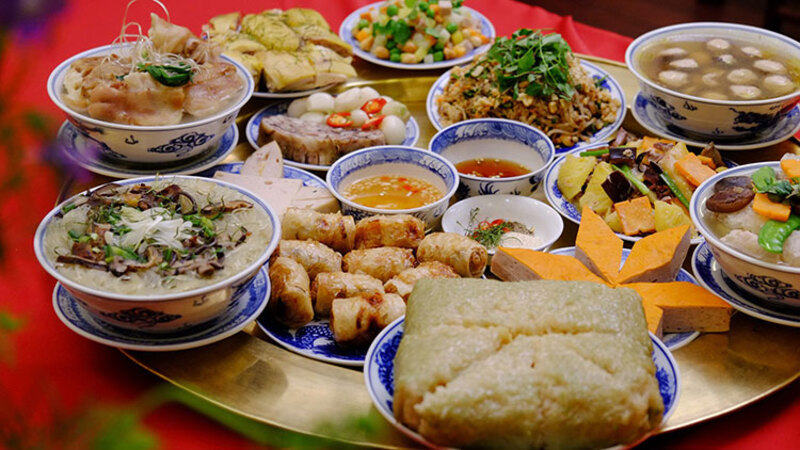
2. Use of fresh and diverse ingredients
Vietnam is an agricultural country with diverse climatic conditions, providing abundant sources of fresh ingredients. Vietnamese cuisine maximizes the use of these fresh and delicious ingredients, including vegetables, fruits, various meats, seafood, and even insects. Each region has its own specialties, contributing to the overall diversity of the country’s culinary landscape.
3. Exquisite culinary techniques
Vietnamese cuisine emphasizes delicate and meticulous cooking techniques. Dishes are often intricately prepared through multiple steps, from preparing ingredients to marinating, cooking, and presentation. Thanks to the skill and precision of Vietnamese chefs, each dish carries a unique flavor that captivates diners.
4. Unique culinary culture
In addition to delicious flavors, Vietnamese cuisine also attracts attention with its unique culinary culture. Vietnamese people often share meals together, using chopsticks and sharing food. Family meals are occasions for gathering, bonding, and sharing life stories.
Vietnamese cuisine not only delights the palate but also offers a glimpse into the rich cultural heritage and communal spirit of the Vietnamese people.
Top 10+ Vietnamese Food You Must Try When Coming to Vietnam
1. Pho – The Most Famous Dish in Vietnam
Pho is arguably the most well-known Vietnamese dish, and for good reason. This noodle soup features rice noodles in a flavorful broth, typically made from beef or chicken, and is topped with fresh herbs, bean sprouts, and slices of meat.
- Origins: Pho is believed to have originated in the early 20th century in northern Vietnam, but its popularity quickly spread throughout the country.
- Regional Variations: While the basic components of pho remain the same, regional variations exist. In northern Vietnam, pho is typically made with a clear broth, while in the south, the broth is often richer and slightly sweeter.
- Must-Try Toppings: To fully experience the flavors of pho, try adding fresh lime wedges, chili sauce, and a sprinkle of black pepper to your bowl.
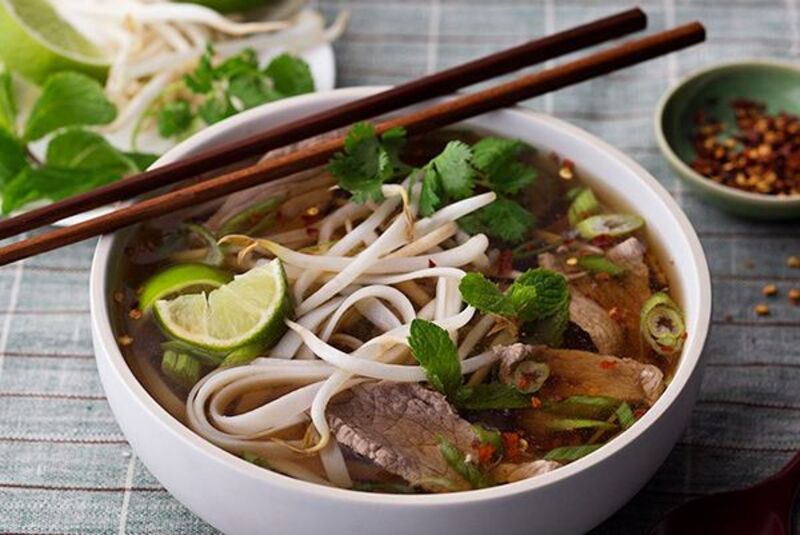
2. Bun Bo Hue
Originating from the imperial city of Hue, Bun Bo Hue is a spicy noodle soup that packs a flavorful punch. It features rice vermicelli noodles in a beef broth, accompanied by slices of beef shank, pork knuckles, and a variety of herbs and spices.
- Complex Flavors: Bun Bo Hue is known for its intense flavors, achieved through a blend of lemongrass, shrimp paste, and chili.
- Toppings: Common toppings for Bun Bo Hue include sliced green onions, cilantro, lime wedges, and a side of chili sauce for those who like an extra kick of heat.
- Regional Variations: While the Hue version is considered the standard, variations exist throughout Vietnam, with each region adding its own unique twist.

3. Bánh Mì – Vietnamese Bread
Vietnamese bread, or banh mi, is a culinary masterpiece that combines French baguette-making techniques with Vietnamese flavors. These sandwiches are filled with a variety of ingredients, ranging from grilled meats and pâté to pickled vegetables and fresh herbs.
- Fillings: Popular fillings for banh mi include pork belly, Vietnamese sausage (cha lua), chicken, and even tofu for vegetarians.
- Accompaniments: Banh mi is often served with a side of pickled carrots, daikon radish, cilantro, and a drizzle of soy sauce or nuoc cham.
- Regional Variations: While the basic concept remains the same, regional variations exist in terms of fillings and bread styles.
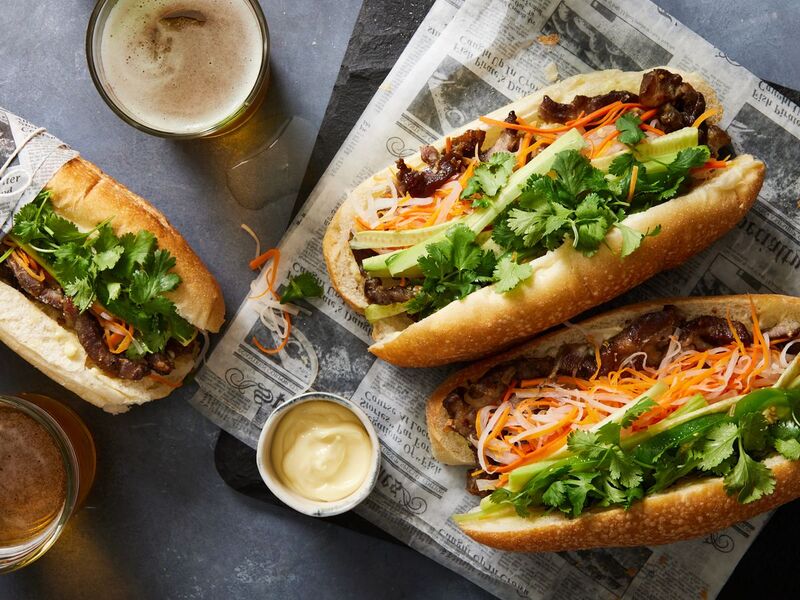
4. Bun Cha
Bun Cha is a beloved dish from northern Vietnam, consisting of grilled pork patties served with a flavorful dipping sauce, fresh herbs, and vermicelli noodles.
- Dipping Sauce: The star of Bun Cha is the dipping sauce, which is a blend of fish sauce, lime juice, sugar, and chili peppers, providing a perfect balance of sweet, sour, and spicy flavors.
- Accompaniments: Bun Cha is typically served with a side of fresh herbs, such as mint, cilantro, and lettuce leaves, which are used to wrap the pork patties and noodles.
- Regional Variations: While the dish originated in Hanoi, variations exist throughout northern Vietnam, with some regions adding additional ingredients or adjusting the ratios of the dipping sauce.
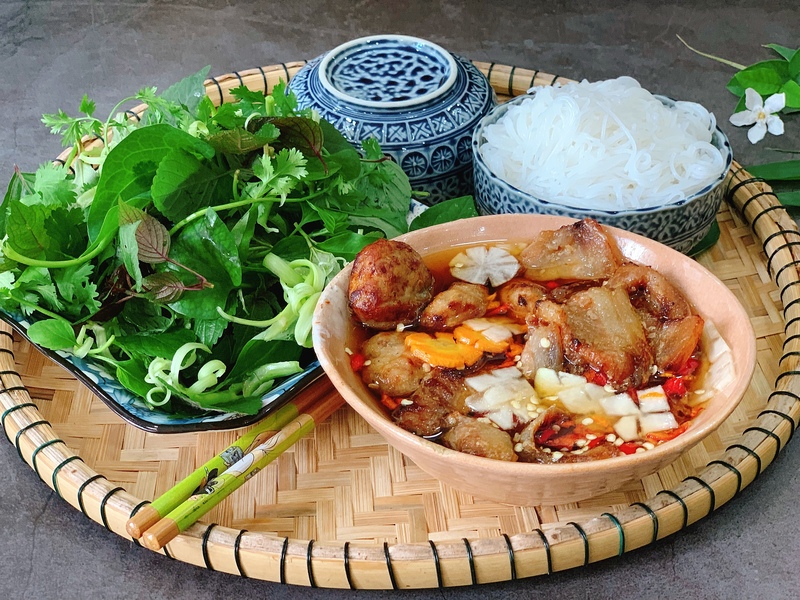
5. Cao Lau
Cao Lau is a regional specialty from the city of Hoi An, famous for its unique noodles and flavorful toppings.
- Noodles: The noodles used in Cao Lau are made from a blend of rice flour and ashes from a specific type of tree, giving them a distinct texture and appearance.
- Toppings: Cao Lau is typically topped with slices of char-siu pork, bean sprouts, fresh herbs, and a crispy pork rind cracker.
- Broth: The broth for Cao Lau is light and flavorful, made from a combination of chicken and pork stock, providing a perfect base for the dish.
6. Goi Cuon (Fresh Spring Rolls)
Goi Cuon, or fresh spring rolls, are a light and refreshing Vietnamese appetizer or snack, perfect for hot summer days.
- Fillings: Goi Cuon is typically filled with vermicelli noodles, shrimp, pork, fresh herbs, and vegetables, all wrapped in a translucent rice paper wrapper.
- Dipping Sauce: These fresh rolls are often served with a peanut dipping sauce or nuoc cham, adding an extra layer of flavor.
- Regional Variations: While the basic concept remains the same, regional variations exist in terms of fillings and dipping sauces.
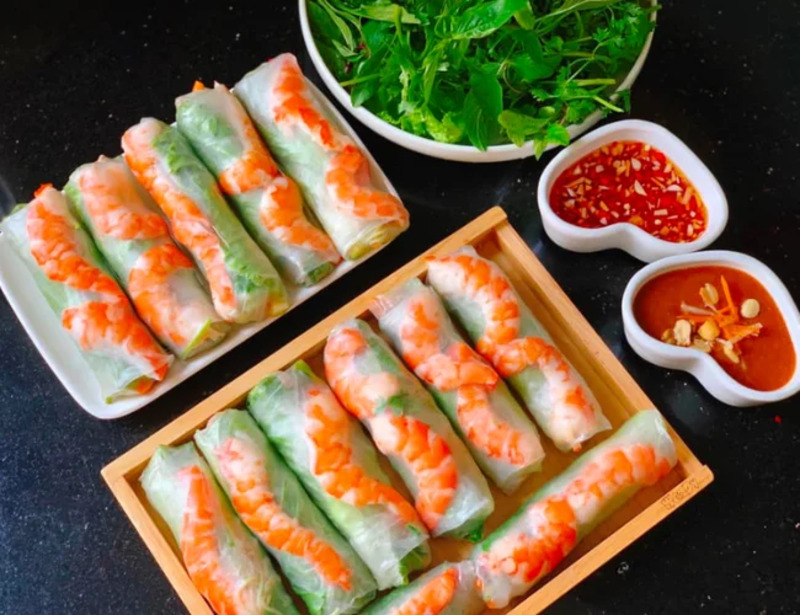
7. Sticky Rice
Sticky rice, or xoi, is a beloved Vietnamese dish that can be enjoyed for breakfast, lunch, or as a snack.
- Varieties: There are many varieties of xoi, including savory options like xoi ga (chicken sticky rice) and sweet options like xoi ngo (sticky rice with corn).
- Accompaniments: Savory sticky rice dishes are often accompanied by pickled vegetables, pork floss, or a fried egg, while sweet varieties may be topped with coconut, mung beans, or grated ginger.
- Regional Variations: Regional variations exist in terms of ingredients and cooking methods, with some regions preferring steamed sticky rice while others prefer it fried.
8. Grilled Chopped Fish (Cha Ca)
Cha Ca, or grilled chopped fish, is a signature dish from Hanoi that combines fresh fish with a flavorful marinade and a unique cooking method.
- Ingredients: Cha Ca is typically made with fresh turmeric-marinated fish fillets that are grilled and then sautéed with dill, green onions, and peanuts.
- Cooking Method: The fish is cooked tableside on a sizzling hot pan, creating a fragrant and interactive dining experience.
- Accompaniments: Cha Ca is traditionally served with vermicelli noodles, fresh herbs, and a fermented shrimp sauce for dipping.
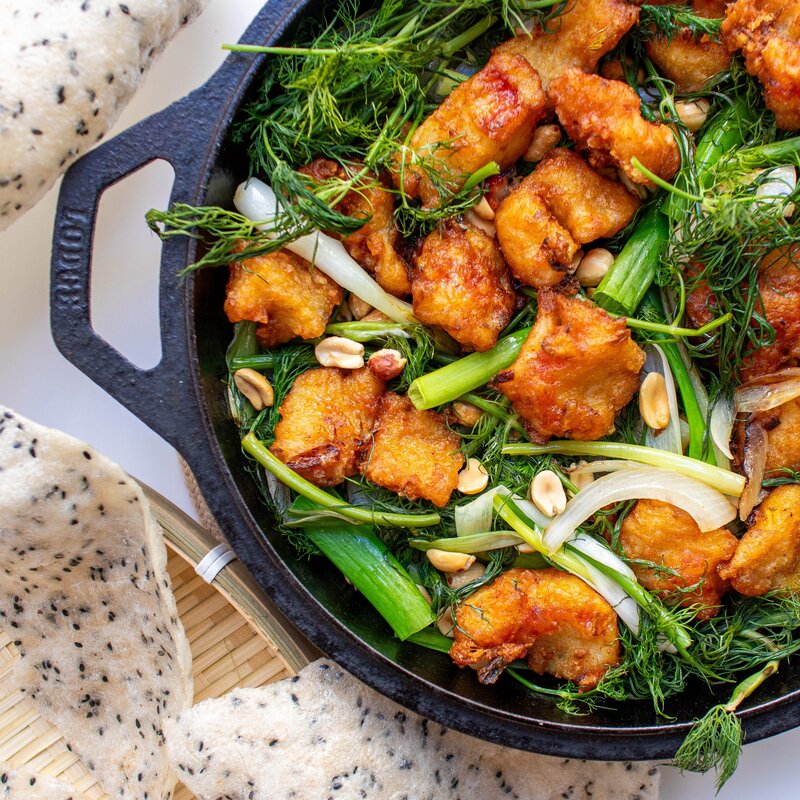
9. Pancakes (Banh Xeo)
Banh Xeo, or Vietnamese sizzling pancakes, are a popular street food item that combines crispy rice flour crepes with savory fillings.
- Fillings: Common fillings for Banh Xeo include shrimp, pork, bean sprouts, and fresh herbs.
- Dipping Sauce: These pancakes are typically served with a sweet and tangy dipping sauce, often made with fish sauce, sugar, and lime juice.
- Eating Method: The pancakes are meant to be wrapped in fresh lettuce or mustard leaves, along with the fillings and dipping sauce, creating a portable and flavorful meal.
10. Mi Quang
Mi Quang is a regional specialty from the coastalcity of Quang Nam, known for its vibrant colors and bold flavors.
- Noodles: Mi Quang features thick rice noodles that are yellow in color, thanks to the addition of turmeric during the cooking process.
- Toppings: Common toppings for Mi Quang include shrimp, pork, hard-boiled eggs, peanuts, and fresh herbs, all served in a small amount of savory broth.
- Accompaniments: Mi Quang is typically served with a side of shrimp crackers, lime wedges, and chili sauce for those who prefer an extra kick of spice.
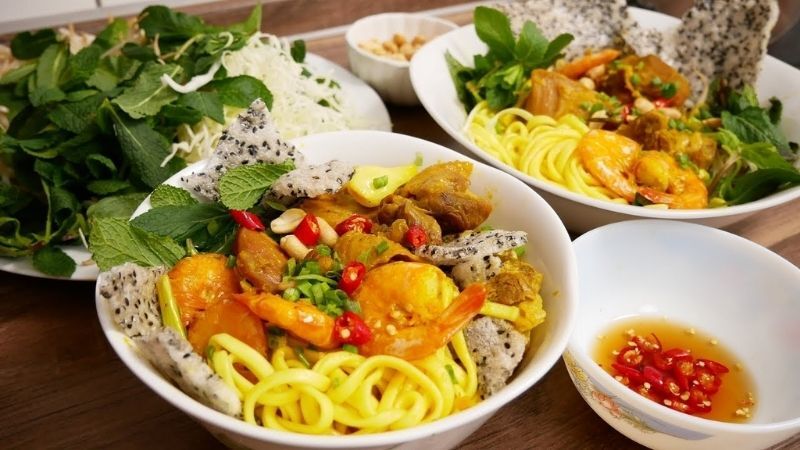
11. Baked Rolls (Nem Nuong)
Nem Nuong, or Vietnamese baked rolls, are a delicious and versatile dish that can be enjoyed as a snack, appetizer, or main course.
- Ingredients: Nem Nuong is made from ground pork that is seasoned with garlic, sugar, fish sauce, and pepper, then shaped into small patties or skewered onto bamboo sticks.
- Cooking Method: The rolls are typically grilled or baked until they are golden brown and cooked through, resulting in a juicy and flavorful bite.
- Serving Style: Nem Nuong is often served with lettuce leaves, fresh herbs, vermicelli noodles, and a dipping sauce, allowing diners to create their own wraps or bowls.
Should you tip when eating at a restaurant in Vietnam?
In Vietnam, tipping is not a common practice, especially at local eateries and street food stalls. However, in tourist areas and upscale restaurants, a service charge may be included in the bill, so it’s always a good idea to check before leaving an additional tip.
If you receive exceptional service and wish to show your appreciation, a small tip of around 5-10% of the total bill is considered generous. Keep in mind that tipping is voluntary and should reflect your satisfaction with the dining experience.
When tipping in Vietnam, it’s best to give the gratuity directly to the staff who served you, as tipping in front of others may cause embarrassment. Additionally, if you’re unsure about whether to tip or how much to tip, feel free to ask a local or hotel staff for guidance.
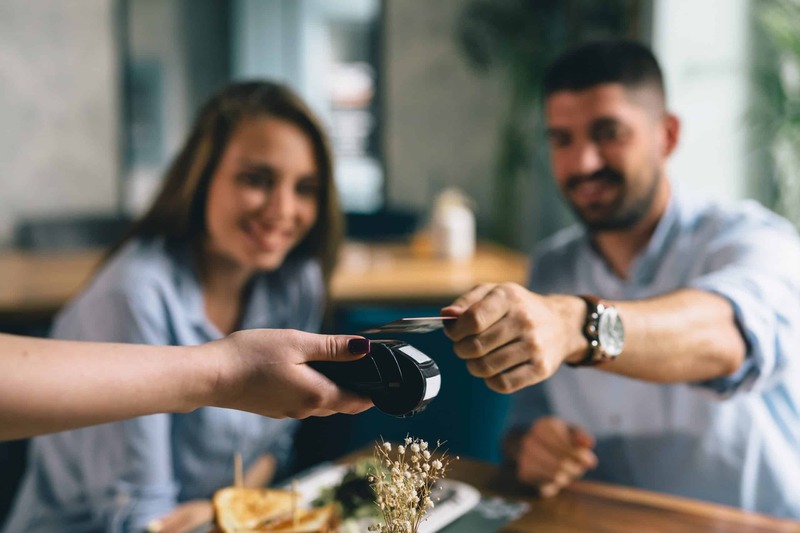
Some notes when eating in Vietnam
Vietnamese food captivates domestic and foreign tourists with its flavor and exquisite presentation. However, to enjoy them fully, you need to note the following:
- Use Chopsticks: While forks and spoons are available in some restaurants, using chopsticks is the traditional way to enjoy Vietnamese cuisine.
- Slurping is Acceptable: In Vietnamese culture, slurping your noodles is a sign that you are enjoying the meal, so don’t be afraid to make some noise while eating.
- Sharing is Caring: Many Vietnamese dishes are meant to be shared family-style, so feel free to order a variety of dishes and sample a bit of everything.
- Try Street Food: Some of the best and most authentic Vietnamese dishes can be found on the streets, so don’t hesitate to try street food vendors for a truly local experience.
- Stay Hydrated: Vietnamese cuisine can be spicy and rich, so be sure to drink plenty of water or fresh coconut juice to stay hydrated during your culinary adventures.
Conclusion
Vietnamese food is a delightful fusion of flavors, textures, and aromas that will tantalize your taste buds and leave you craving more. From the iconic Pho to the lesser-known regional specialties like Mi Quang and Cha Ca, there is a wealth of culinary treasures waiting to be discovered in Vietnam.
Whether you’re savoring a steaming bowl of noodles on a bustling street corner or indulging in a multi-course feast at a fine dining establishment, the diverse and vibrant food scene in Vietnam is sure to impress even the most discerning foodie. So pack your chopsticks, bring your appetite, and get ready to embark on a gastronomic journey through the heart of Southeast Asia.

